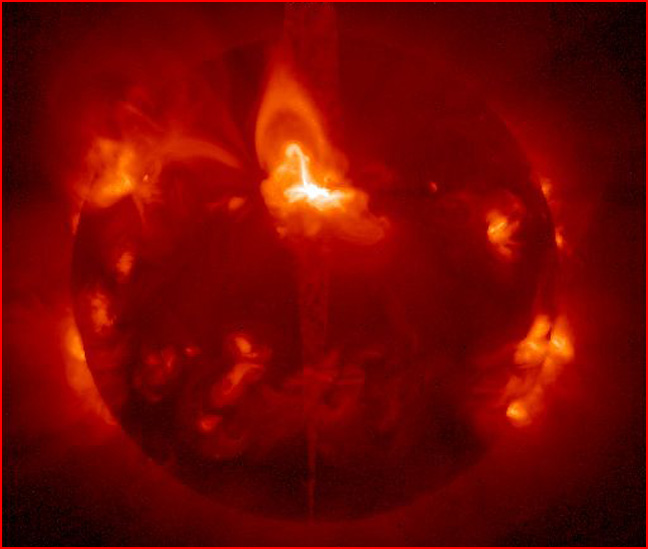|
|
||
 Image Credit: ISAS, Yohkoh Project, SXT Group |
||
|
pic of the day Links:
Society for
|
Mar 09, 2005 How could the Sun's surface--at only 6000 degrees--heat its atmosphere to a million degrees or more, hot enough to shine in x-ray light? We take for granted that the Sun's light and heat come from nuclear reactions in its core. Although that theory is less than a century old, it fits so well with so many other theories and it's been verified so often--the theory predicts what we see -- that it must be true. But is this the whole story? We overlook the intellectual work done in that past century to make the theory fit: Observations were selected and interpreted to conform to theoretical expectations. Theories were modified to account for non-conforming observations. Anomalies-- observations that were "not fully understood"--were set aside to await further elucidation. The million degree atmosphere is one such anomaly. And we discount speculative work that explores other theories, that asks, "What else could it be?" We can do things with theories only in areas where they work, in domains of data where they are verified. Finding data that falsify a theory means the theory is useless in that larger domain. But it's in these domains of surprised expectations and anomalies that we discover new theories. Most speculations don't work out. We forget them and the work that went into them. But a few survive the selecting, interpreting, and modifying to become taken for granted in another century. The Electric Universe theory interprets the Sun as an electrode in a plasma discharge. From this point of view, the x-ray emitting atmosphere is not an anomaly. X-rays are a common signature of electrical activity. As early as the 1960's, Charles Bruce demonstrated how electric discharge phenomena explains five major and thirteen minor anomalies of solar surface behavior. Imagine the Sun not as a nuclear bomb in the sky but as an electric arc-lamp plugged into a galactic power grid. The Electric Universe theory promises to encompass the unexpected discoveries of the space age and the mechanically explained phenomena of the past in a larger and more unified picture of our universe. |
|
|
Copyright 2004: thunderbolts.info |
||
